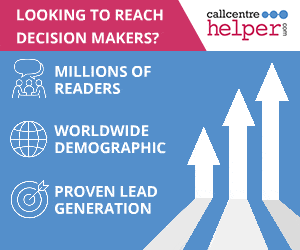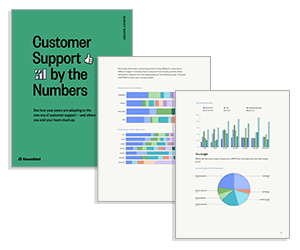Want to know the difference between working locally and stepping up into a global planning role?
Our Editor – Megan Jones – spoke to Danny Gunn, Irina “Mateeva” Hollatz, Juanita Coley, and Tim Milburn to find out more about what it really takes to succeed as a Global Workforce Planning Manager working across multiple cultures, countries, and time zones.
Adapt Your Communication for Different Cultures (Even in Your Presentations!)
One of the biggest challenges of working globally is adapting your communication style to suit different languages and cultures.

“People usually underestimate the need to understand different cultural norms. I have seen so many people fail by being too blunt in a culture where teams will interpret it as rude, or working in cultures that are too agreeable and finding out the hard way that, even though a team has said “yes” in the meeting, they may never actually follow through.
You simply can’t succeed without being able to adapt your approach accordingly.” – Irina “Mateeva” Hollatz, WFM Transformation Consultant at RightWFM
You also need to be mindful of any confusion that may arise from working with people who are speaking English as a second language, and be proactive in making allowances for that.
For example, make a conscious effort to change your presentation style – including deliberately slowing your pace, and either avoid jargon or take extra time to explain what a term means.
It’s equally important to build a sense of psychological safety in your team, so everyone knows it’s ok not to know the answer and feels confident enough to stop and say “What does that term mean?” to help keep lines of communication open.
For advice on improving your communication and applying these skills in your contact centre, read our article: The 7 Cs of Effective Communication
Analyse Data to Understand How Customers Differ Across Markets Too
It’s not just your teams that will differ between countries. Your customers will too!
You need to be prepared for customers in other countries to display different behaviours and preferences (e.g. channel choice). Just because something works in the Nordics doesn’t mean it will work in Eastern Europe – for example.
You need to constantly analyse your data to understand what’s important to your customers per region, and shift your strategy based on those market differences.
Be Respectful of Everyone’s Core Working Hours Across Different Time Zones
Another notable change when going from working locally to globally is managing time zones!
To do this well, you must always think about which teams you are trying to communicate with and where they are in the world, as you only have certain windows each day where things naturally overlap.
You should always be very mindful of and appreciative of the time difference and make sure to schedule meetings inside everyone’s core hours. Quite simply, there cannot be anything that urgent that it can’t wait until they’re in work!
That being said, as a manager, sometimes a personal sacrifice is required to work well across different time zones.
“There’s no avoiding it! If you’re taking on a global role, you have to accept that sometimes you will have to get up at 4am to host a meeting. The time zones don’t always align in your favour, so it will occasionally require a personal sacrifice of your time.” – Danny Gunn, Head of Workforce Planning at bet365
It’s not just time zones you need to be conscious of either! You also need a firm understanding of any cultural events or differences that may disrupt your assumptions around scheduling and agent availability.

“You really need to know if your agents in a certain part of the world are going to pray every day at 12 noon, for example, because that is something that’s embedded in their culture and you’re going to have to adapt your scheduling to fit their needs.
It’s things like this that make it so vital to approach a global role with an open mind and invest time in immersing yourself in other cultures.” – Juanita Coley, CEO & Founder of Solid Rock Consulting
Take the Time to Build Personal Connections With Your Global Team
Don’t underestimate the importance of personal connections when working with a global team, as having something to talk about before diving into a meeting can really help to maintain strong professional relationships.

“Making time for people is really important! I’ve got some colleagues over in the US who I’ve never met in person, but we have daily Teams calls to check in and see if there’s anything I can help with.
It’s also great to take the opportunity to ask how their families are (and I make sure to know all their kids’ and pets’ names!) as it just makes everybody feel at ease.” – Tim Milburn, Global Workforce Planning Manager at Emovis
Visit Each Site (at Least!) Once a Year
If you’re going to take on a global role, expect to travel a lot too!
There’s a lot you can do via Teams, and building relationships remotely is possible, but nothing replaces face-to-face meetings, so you need to invest time in visiting the teams you’re supporting overseas.
It may be the case that you are based in the UK and it’s easy enough to travel to Europe every 10 weeks or so, but even so, you should aim to visit the long-haul destinations at least once a year too.
Accept There’s a Fine Balance to Strike Between Centralized and Local Operations
Even if you want to centralize everything across your global operation, it doesn’t always work out best that way, so you need to find a balance that works for everyone involved.
It’s about getting that balance right about what can be done centrally and what needs to be delegated. Sometimes, you just can’t beat local market knowledge, but it’s a hard balance to strike – particularly when mistakes happen, and processes aren’t always followed as closely as you’d like.
From a people perspective, it’s about keeping the conversation open – making sure everyone understands what you’re trying to solve, how to solve it, and then, from a practicality standpoint, admitting that you simply can’t control everything centrally.
Getting internal communication right is key, and if you are looking for advice on this, read our article: 7 Clever Ways to Improve Internal Communication Between Departments
Network, Network, Network!
Make sure to maintain a strong internal network and keep in regular contact with your team leaders and operational managers around the globe.
This will help you to have a much firmer grasp of what it’s really like for your frontline teams when a hurricane hits in Florida (for example) and the best ways to overcome these challenges.
It’s useful to network with people outside of your organization too!
It can help so much to be part of networking communities, like The Forum, where you can talk to people who are also supporting operations in different countries and ask really niche questions about the challenges you are facing in different parts of the world.
Make Sure Everyone Is Using the Same WFM System
It makes life a lot easier if everyone is using the same WFM system across your different sites.
“For a time, we did have two separate WFM systems, but we got ourselves in a bit of a muddle in the end as one system could do some things that the other one couldn’t.
It was also harder to cover other people’s roles if they were on annual leave. So now we’ve switched to a single system across all of our operations, which has been a big improvement.” – Tim Milburn
…But Don’t Forget to Engage With HR and Data Privacy Officers to Adapt Your WFM Settings to Regional Laws and Workforce Needs
Even when everyone is working on the same system, you need to be mindful of which features you may need to switch on and off in different regions, depending on any legal limitations and business requirements.
“When rolling out a WFM tool globally, some companies will try to make it the same for every single country and inevitably fail. You just can’t do this.
Not only are there cultural differences, but there are also different legislations to work around. For example, did you know that in Germany you can’t show performance metrics?
To learn more, you need to talk to teams, travel, and immerse yourself in those cultures to understand the differences. And it’s not only about talking to the teams that will be using the system.
You also need to engage with local HR and data privacy officers too, who will be able to steer you specifically on the legal limitations and business requirements you need to know.” – Irina “Mateeva” Hollatz
The good news is that once you are aware of any differences, these changes can be made centrally – whilst keeping everyone plugged into the same WFM system.

“Compared to the complexities of people and processes, technology is the easiest part of working globally – particularly when everyone plugs into the same system.
Of course, we provide slightly different configurations for different areas, but this is something we can control centrally thanks to the technology being in place.” – Danny Gunn
And Be Sure to Lean Into the Advantages Too (Such as Using a Single Site as a “Guinea Pig” for Trialling a New Channel)
Despite the many challenges to consider, there are also some great advantages to leading multiple sites around the world – including being able to trial a new initiative at a single site before rolling it out globally.
For example, if you want to do a controlled launch of a new channel, such as webchat, and see the impact – including on your service level and Average Handling Time (AHT), as well as how your frontline agents respond to it – before rolling it out to other sites.
Are You in a Global Role? What’s Your Experience of Making It a Success?
Join our LinkedIn Community and let us know.
With thanks to the following people for sharing their thoughts and experiences for this article:
- Danny Gunn, Head of Workforce Planning at bet365
- Irina “Mateeva” Hollatz, WFM Transformation Consultant at RightWFM
- Juanita Coley, CEO & Founder of Solid Rock Consulting
- Tim Milburn, Global Workforce Planning Manager at Emovis
If you are looking for more information on improving your contact centre planning, read these articles next:
- The Dos and Don’ts of Agent Scheduling
- 10 Ways Resource Planners Can Make Their Voices Heard
- 10 Ways to Kick-Start Your Adherence Improvement Strategy
Author: Megan Jones
Reviewed by: Jo Robinson
Published On: 21st Apr 2025 - Last modified: 23rd Apr 2025
Read more about - Workforce Planning, Danny Gunn, Irina Mateeva, Juanita Coley, Scheduling, Shift Patterns, Tim Milburn, Top Story, Workforce Management (WFM)


















